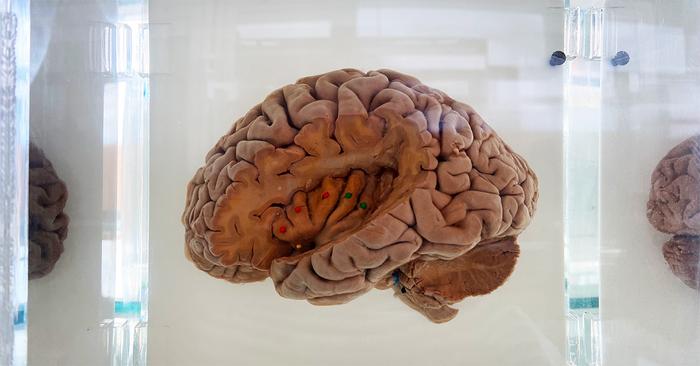
A groundbreaking study conducted by researchers at the Department of Molecular Medicine at the University of Southern Denmark reveals critical insights into how the brain copes with the aftermath of strokes. As one of the most formidable challenges faced by the human brain, strokes result in substantial injury to the neural pathways, commonly referred to as nerve fibers. This study, utilizing unique tissue samples from Denmark’s Brain Bank, offers hope for improved therapeutic strategies aimed at enhancing the brain’s innate repair mechanisms.
When a stroke occurs, it leads to a significant interruption in blood flow to specific brain regions, a misfortune that precipitates neuronal injury and subsequent brain damage. The brain, however, is equipped with remarkable self-repair capabilities, which primarily involve the regeneration of myelin, the protective insulating layer surrounding nerve fibers. However, this repair process frequently falls short, resulting in prolonged deficits in both motor and cognitive functions for many stroke survivors. Professor Kate Lykke Lambertsen, a primary author of the study, emphasizes the urgency in optimizing these repair processes to mitigate long-term damage. The pressing need is to devise strategies that empower brain cells to perform their reparative tasks efficiently, even in unfavorable conditions.
To fully understand the neural repair mechanisms, researchers turned their attention to the role of inflammation, a significant obstacle in this process. The study identifies a specific subset of cells responsible for myelin reconstruction in the brain, which tends to be impeded by inflammatory responses following injury. The intricate relationship between these repair cells and inflammatory states is key to unlocking new treatment pathways.
Additionally, the innovative use of Denmark’s Brain Bank has proven invaluable to the research team. This collection comprises a wealth of tissue samples, serving as a crucial resource to map areas of active repair within the brain. By employing advanced technological techniques, such as immunohistochemistry, the researchers can accurately identify and characterize the cells involved in the reconstruction of myelin in regions affected by stroke.
The nuanced examination of these tissue samples provides a clearer picture of the varying brain regions, distinguishing between severely damaged areas known as the infarct core and the peri-infarct tissue, which exhibits potential for regeneration. Through meticulous analysis, the research shines a light on the accumulation patterns of repair cells and how these vary based on important factors, such as time post-stroke and the gender of the patient.
A particularly intriguing finding of this study is the differential response of male and female brains to injuries sustained during strokes. Observations suggest that women exhibit greater susceptibility to the disabling effects of strokes due to heightened inflammatory responses, which may compromise their repair capabilities. Conversely, men seem to display a slightly better resilience in initiating repair processes. This gender disparity emphasizes the necessity for tailored treatment approaches that consider individual patient needs, using gender as a guiding factor in future therapeutic interventions.
As the researchers point out, the discoveries stemming from this study would not have been possible without the extensive resources provided by Denmark’s Brain Bank. With over 10,000 human samples, the brain bank serves as a vital asset for elucidating the complex biology underlying various neurological conditions, particularly those prompted by strokes.
Remarkably, this research not only contributes to the theoretical framework surrounding stroke recovery but also opens doors to innovative treatment methodologies. By gaining insights into how specific cells operate and interact during the healing process, future therapies could be designed to enhance myelin rebuilding while simultaneously addressing the inflammatory response.
In conclusion, the significance of this study stretches beyond the immediate findings; it marks a notable advancement in our comprehension of how the brain tackles one of the most debilitating consequences of stroke. As research unfolds, it holds the promise of refining therapeutic options, essentially paving the way for better recovery outcomes for stroke survivors. By fostering a deeper understanding of the brain’s reparative processes and gender-specific responses, the scientific community may soon be better equipped to develop cutting-edge treatments that truly address the impacts of stroke injuries.
The journey towards unraveling the complexities of brain repair is far from complete, but this latest research serves as an essential landmark in understanding the brain’s resilience. As it brings us one step closer to potentially transformative therapeutic interventions, the hope is to empower individuals affected by strokes, giving them the best chance for recovery and rehabilitation.
Subject of Research: Brain Repair Mechanisms Following Stroke
Article Title: Characterisation of GPR17-expressing oligodendrocyte precursors in human ischaemic lesions and correlation with reactive glial responses
News Publication Date: 20-Dec-2024
Web References: Journal of Pathology DOI
References: None provided
Image Credits: University of Southern Denmark
Keywords
Stroke, brain repair, myelin, nerve fibers, inflammation, gender differences, tissue samples, Denmark’s Brain Bank, stroke recovery, therapeutic interventions.
Tags: brain self-healing mechanismscognitive function after strokeDenmark Brain Bank researchDepartment of Molecular Medicine studiesenhancing neural pathways recoverylong-term effects of strokemotor function recovery post-strokemyelin regeneration in brainneuronal injury and repairoptimizing brain repair processesstroke recovery researchtherapeutic strategies for stroke





